Somerfield has struggled to reverse its fortunes, but is it seen as a prize worth winning, ask Rachel Barnes & Fiona McLelland
United Co-operatives’ surprise decision to pull out of the race for Somerfield - just seven weeks after its equally surprising decision to approach the board with a possible offer - has been put down to general jitters over the retail sector and fear that, like Morrisons and Safeway, it might be biting off more than it could chew. United itself has kept stum.
David Forbes, director of NM Rothschild, which advised United, insists the decision to withdraw was not down to any gaping holes in Somerfield’s books. “We had a good look around and nothing we found was particularly horrible. The risks were simply greater than the rewards.”
The comparative size, funding and the plight of “Uncle Ken up in Bradford” were all factors. “The fact that the retail sector is in a worse situation than it was two to three months ago is also a big consideration. It’s a greater risk now than when we first started looking,” says Forbes.
A source close to Somerfield adds the size of United compared to Somerfield is likely to have been the main factor. “Its turnover is a fraction of Somerfield’s, so how easy would it be for them to raise the necessary money?”
United probably realised it was likely to be outgunned in a bidding war, says Paul Smiddy, retail analyst at RW Baird.
“I think it realised it would be blown away by rival bidders. It would have already spent a lot of money on due diligence but would probably be needing to spend even more over the next few weeks. It was a little naïve to get into it in the first place.”
Although United’s statement to the stock market reserves the right to table an offer in the future, this was simply “good house-keeping”, adds Forbes. If United had not included the clause it would mean that even if the price of Somerfield - currently valued at £1.1bn by indicative proposals of 205p a share - was to halve, it would be unable to re-enter the bidding.
So the battle for Somerfield now looks to be a two-horse race with a consortium of big hitters, including the highly acquisitive Icelandic investment vehicle Baugur, Barclays Capital, Apax partners and Iranian businessman Robert Tchenguiz, in one corner and London Regional Properties, backed by Nomura, in the other. Mutterings that property firm Topland is still interested continue, but it has yet to declare its hand.
There’s no sign that due diligence by the two parties, which kicked off at the beginning of May, is going to come to a swift conclusion. The earliest it is now expected to complete is in mid July after Somerfield’s full year results on July 6. But, according to Smiddy, this is not a sign of things “cooling off” for either party, rather the time taken reflects that both bidders are looking at property-based bids. “And that creates a lot of paper work,” he says.
As a turnaround company, Somerfield is clearly an attractive prospect. In 2000, year-on-year sales were down 7.3% to £5.4bn, while pre-tax profits had slumped 68% to £70.7m. Newly appointed chairman, John Von Spreckelson, was bullish that the decline was reversible and a year later he announced the rot had been stopped. Despite a further decline in like-for-like sales of 4.9%, by 2002 the company appeared to have reversed its fortunes with sales up 2.5%.
“Undoubtedly, it has moved forward over the past five years - it has re-ranged and brought in better cost management and developed better own-label. The So Good range has made a difference. It has also improved the fresh, ” says one analyst. But more needs to be done, particularly on pricing. “Somerfield will have to keep pushing here as it is typically 15% adrift on price. It doesn’t have to be absolutely bang on the money because of its convenience factor, but it is still quite expensive.”
By the end of 2004, 33% of all Somerfield stores had been revamped, many into the new Essentials format and others into Market Fresh. These stores are achieving a return of £14 per sq ft compared to £7 per sq ft for the old stores. But the rewards are still not enough. “The plan was to get a good small store model to enable easy franchising, but as the franchising plan was recently put on hold, it suggests Somerfield continues to struggle to get the costs down.”
Somerfield has now boosted the store investment budget and size of its refit team. This year it is giving 100 stores a makeover and aims to have the bulk of its 1,300 stores revamped by 2007.
It is now also in the final stages of developing an umbrella IT system for both Somerfield and its sister retailer Kwik Save (viewed by many as the Achilles heel of the group) which began last year, along with the introduction of a unified epos system, and a major recruitment drive to take the scheme forward (The Grocer, p17, June 25).
But, for all the investment, Somerfield is just rearranging the deck chairs without mending the hole in the hold, says one analyst: “The bigger question is about retailing - how is Somerfield going to increase footfall and basket size? It could be that it is fighting a losing battle because one of the major problems is that the stores are the wrong size and in the wrong location.
“There are obviously some great stores around but when you’ve got 1,300, there are going to be a lot of dogs.”
Smiddy, however, is more upbeat. “It is still in the process of sorting out its supply chain and improving its ranges. It’s committed to the convenience and local supermarket offer and there will continue to be acquisition opportunities in this space for the foreseeable future.”
United Co-operatives’ surprise decision to pull out of the race for Somerfield - just seven weeks after its equally surprising decision to approach the board with a possible offer - has been put down to general jitters over the retail sector and fear that, like Morrisons and Safeway, it might be biting off more than it could chew. United itself has kept stum.
David Forbes, director of NM Rothschild, which advised United, insists the decision to withdraw was not down to any gaping holes in Somerfield’s books. “We had a good look around and nothing we found was particularly horrible. The risks were simply greater than the rewards.”
The comparative size, funding and the plight of “Uncle Ken up in Bradford” were all factors. “The fact that the retail sector is in a worse situation than it was two to three months ago is also a big consideration. It’s a greater risk now than when we first started looking,” says Forbes.
A source close to Somerfield adds the size of United compared to Somerfield is likely to have been the main factor. “Its turnover is a fraction of Somerfield’s, so how easy would it be for them to raise the necessary money?”
United probably realised it was likely to be outgunned in a bidding war, says Paul Smiddy, retail analyst at RW Baird.
“I think it realised it would be blown away by rival bidders. It would have already spent a lot of money on due diligence but would probably be needing to spend even more over the next few weeks. It was a little naïve to get into it in the first place.”
Although United’s statement to the stock market reserves the right to table an offer in the future, this was simply “good house-keeping”, adds Forbes. If United had not included the clause it would mean that even if the price of Somerfield - currently valued at £1.1bn by indicative proposals of 205p a share - was to halve, it would be unable to re-enter the bidding.
So the battle for Somerfield now looks to be a two-horse race with a consortium of big hitters, including the highly acquisitive Icelandic investment vehicle Baugur, Barclays Capital, Apax partners and Iranian businessman Robert Tchenguiz, in one corner and London Regional Properties, backed by Nomura, in the other. Mutterings that property firm Topland is still interested continue, but it has yet to declare its hand.
There’s no sign that due diligence by the two parties, which kicked off at the beginning of May, is going to come to a swift conclusion. The earliest it is now expected to complete is in mid July after Somerfield’s full year results on July 6. But, according to Smiddy, this is not a sign of things “cooling off” for either party, rather the time taken reflects that both bidders are looking at property-based bids. “And that creates a lot of paper work,” he says.
As a turnaround company, Somerfield is clearly an attractive prospect. In 2000, year-on-year sales were down 7.3% to £5.4bn, while pre-tax profits had slumped 68% to £70.7m. Newly appointed chairman, John Von Spreckelson, was bullish that the decline was reversible and a year later he announced the rot had been stopped. Despite a further decline in like-for-like sales of 4.9%, by 2002 the company appeared to have reversed its fortunes with sales up 2.5%.
“Undoubtedly, it has moved forward over the past five years - it has re-ranged and brought in better cost management and developed better own-label. The So Good range has made a difference. It has also improved the fresh, ” says one analyst. But more needs to be done, particularly on pricing. “Somerfield will have to keep pushing here as it is typically 15% adrift on price. It doesn’t have to be absolutely bang on the money because of its convenience factor, but it is still quite expensive.”
By the end of 2004, 33% of all Somerfield stores had been revamped, many into the new Essentials format and others into Market Fresh. These stores are achieving a return of £14 per sq ft compared to £7 per sq ft for the old stores. But the rewards are still not enough. “The plan was to get a good small store model to enable easy franchising, but as the franchising plan was recently put on hold, it suggests Somerfield continues to struggle to get the costs down.”
Somerfield has now boosted the store investment budget and size of its refit team. This year it is giving 100 stores a makeover and aims to have the bulk of its 1,300 stores revamped by 2007.
It is now also in the final stages of developing an umbrella IT system for both Somerfield and its sister retailer Kwik Save (viewed by many as the Achilles heel of the group) which began last year, along with the introduction of a unified epos system, and a major recruitment drive to take the scheme forward (The Grocer, p17, June 25).
But, for all the investment, Somerfield is just rearranging the deck chairs without mending the hole in the hold, says one analyst: “The bigger question is about retailing - how is Somerfield going to increase footfall and basket size? It could be that it is fighting a losing battle because one of the major problems is that the stores are the wrong size and in the wrong location.
“There are obviously some great stores around but when you’ve got 1,300, there are going to be a lot of dogs.”
Smiddy, however, is more upbeat. “It is still in the process of sorting out its supply chain and improving its ranges. It’s committed to the convenience and local supermarket offer and there will continue to be acquisition opportunities in this space for the foreseeable future.”



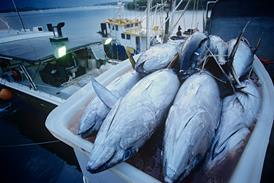
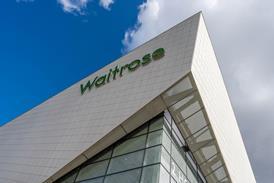





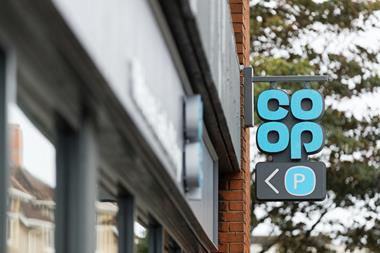



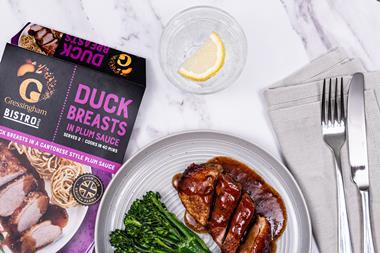


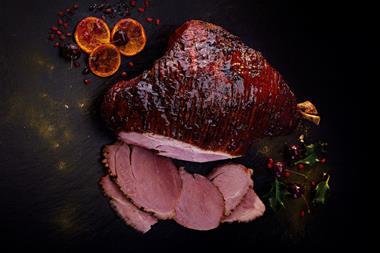
No comments yet